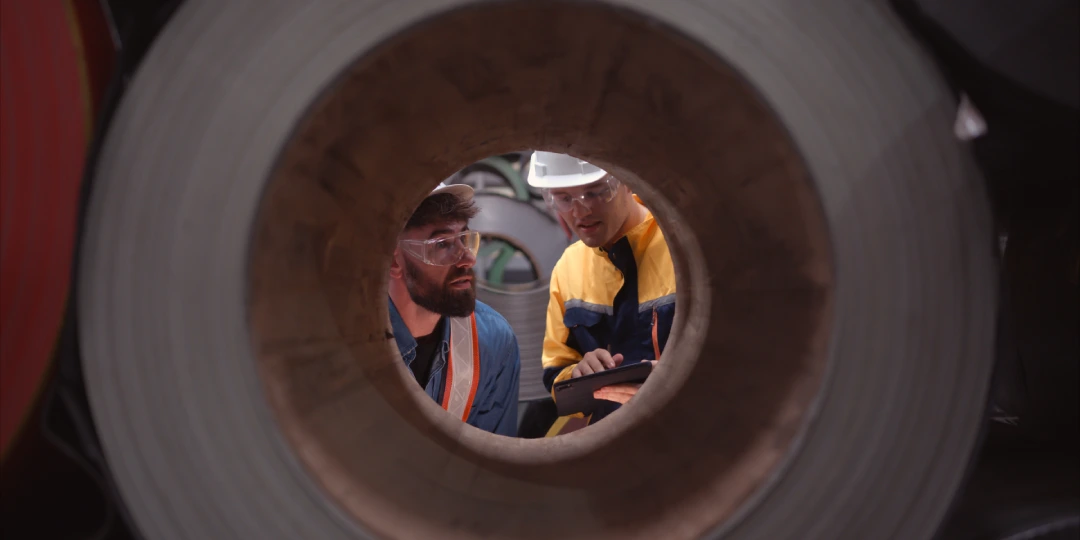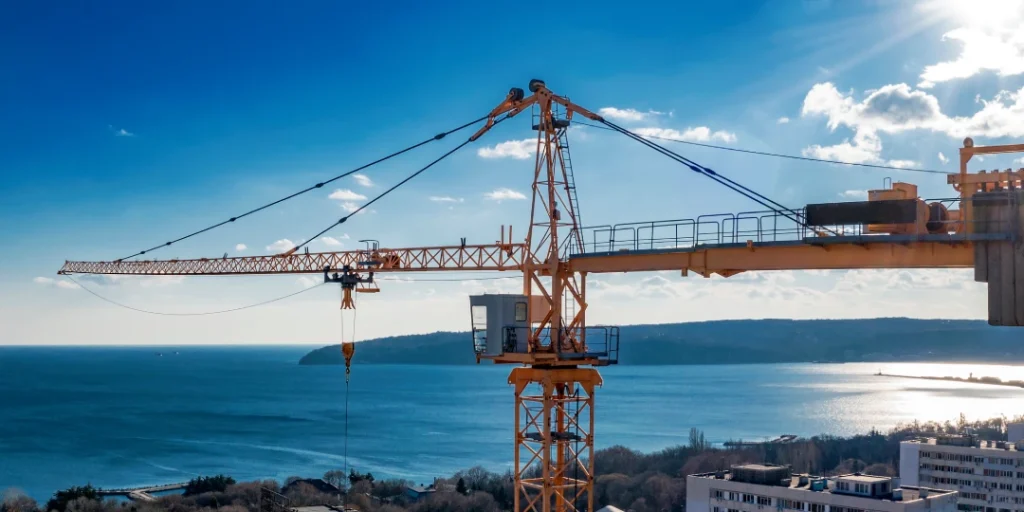Introduction: The Silent Dangers of Confined Spaces
In industrial and commercial settings, confined spaces are omnipresent and deceptively unthreatening. Areas such as tanks, tunnels, culverts, and storage vessels may seem structurally sound and accessible at a glance. Yet these environments conceal a host of latent dangers. With limited means of entry and egress, these spaces can become traps in the event of atmospheric shifts, mechanical failure, or human error. The confined nature of these spaces not only restricts movement but also inhibits ventilation, making the environment increasingly volatile over time.
One of the most insidious risks of confined spaces is their ability to change character within moments. A space that tests safe for oxygen levels at the time of entry may, minutes later, be overcome by a toxic gas leak or oxygen displacement. These changes often occur silently and invisibly, leaving workers with little time to react. The presence of flammable vapors, biological contaminants, or temperature extremes further elevates the level of unpredictability. Without real-time monitoring and pre-planned intervention strategies, even the most routine task can escalate into an emergency.
For employers and workers in Nashville, where industries such as construction, energy, and utilities are booming, the risk is especially relevant. The city’s dynamic growth has expanded the number of job sites and, by extension, the number of confined space hazards. This operational reality underscores the critical importance of robust confined space safety programs. Organizations like Fortier Loss Control are at the forefront of equipping local employers with the tools and knowledge necessary to prevent avoidable tragedies through structured compliance, training, and vigilance.
Understanding Confined Spaces: Definition and Criteria
A precise understanding of what constitutes a confined space is essential for compliance and safety. OSHA defines a confined space as one that meets three criteria: it is large enough for an employee to bodily enter and perform assigned work; it has limited or restricted means of entry or exit; and it is not designed for continuous human occupancy. These parameters help employers identify which areas on their worksites require specialized controls and permit procedures. From underground vaults to industrial mixers, the environments vary widely but share common risk profiles.
Further classification under OSHA’s standards distinguishes between general confined spaces and “permit-required confined spaces” (PRCS). The latter includes any space that contains—or has the potential to contain—a recognized serious hazard. This can encompass a hazardous atmosphere, an engulfment risk (such as loose material that could bury a worker), or configurations that could trap or asphyxiate an entrant. If a space qualifies as PRCS, a detailed permit system must be in place before workers are allowed entry. This includes atmospheric testing, procedural documentation, and the designation of trained personnel for monitoring.
At Fortier Loss Control, accurately identifying and classifying confined spaces is a foundational step in every client engagement. Their team conducts thorough site audits to determine the presence of PRCS and helps employers interpret OSHA’s guidelines in the context of their unique operational environments. This diligence not only ensures regulatory compliance but also establishes a clear safety hierarchy—guiding decisions around access, preparation, and rescue planning. In an industry where misclassification can result in catastrophic outcomes, Fortier’s precision in defining confined spaces is both strategic and lifesaving.
The OSHA Mandate: Regulatory Framework and Compliance Standards
OSHA’s regulatory framework for confined spaces exists to standardize safety protocols and reduce preventable injuries across industries. These regulations, particularly 29 CFR 1910.146 for general industry and Subpart AA of 1926 for construction, outline employers’ legal responsibilities to identify, classify, and control the risks associated with confined spaces. From the initial evaluation of potential hazards to the implementation of written permit systems, OSHA provides a comprehensive structure for maintaining workplace safety in these high-risk environments. For employers in Nashville, understanding and applying these standards is not only a legal requirement—it is a critical investment in human capital.
Compliance with OSHA’s confined space rules requires a multi-tiered approach. It starts with identifying confined spaces and determining if they meet the criteria for permit-required status. If so, employers must establish a written program that includes hazard evaluations, signage, entry permits, atmospheric monitoring, communication systems, and emergency procedures. Each step is designed to minimize uncertainty and ensure that every worker entering a confined space is properly trained, informed, and protected. Documentation and oversight are essential, as OSHA inspectors may audit these procedures at any time, particularly following an incident or complaint.
Fortier Loss Control serves as a strategic partner in interpreting and implementing these regulatory requirements. Their experts help Nashville-area employers avoid costly violations and legal pitfalls by aligning each operational detail with OSHA mandates. From drafting compliant entry procedures to conducting third-party audits, Fortier ensures that safety practices are not just theoretical, but actionable and traceable. In doing so, they bridge the gap between complex federal requirements and practical on-the-ground execution, making compliance an achievable goal rather than a bureaucratic burden.

Common Hazards Found in Confined Spaces
Confined spaces are rife with hazards that are often invisible, unpredictable, and rapidly escalating. One of the most dangerous threats is the presence of a hazardous atmosphere—such as low oxygen levels, flammable gases, or toxic vapors. These conditions can render a space deadly within minutes, especially if workers are unaware of their presence. Ventilation limitations exacerbate the problem, allowing harmful substances to accumulate quickly. Without atmospheric testing and continuous monitoring, these spaces become silent killers, offering no warning before disaster strikes.
In addition to atmospheric dangers, confined spaces often pose physical hazards that are equally severe. These include engulfment risks (e.g., grain, water, or fine particulate matter), mechanical entrapment from moving equipment, and structural instability such as collapsing walls or ceilings. Workers may also face temperature extremes, slick surfaces, or limited mobility, all of which increase the likelihood of slips, falls, or entrapment. The complexity of these environments makes hazard prediction difficult and heightens the necessity for proactive risk management.
Fortier Loss Control is adept at identifying and mitigating these multifaceted risks. Their assessments include gas detection, structural evaluations, and task-specific hazard analysis. More importantly, they develop prevention plans that incorporate engineering controls, administrative procedures, and protective equipment tailored to each specific space. By preempting these dangers with surgical precision, Fortier transforms dangerous work zones into manageable environments, significantly lowering the risk profile for Nashville’s industrial workforce.
The Consequences of Confined Spaces Non-Compliance in Tennessee Work Environments
Non-compliance with confined spaces regulations in Tennessee carries consequences that extend far beyond regulatory fines. While OSHA citations for violations can result in financial penalties reaching tens of thousands of dollars per instance, the greater cost lies in operational disruption, legal exposure, and reputational damage. In worst-case scenarios, failure to follow confined space protocols can lead to severe injuries or fatalities—tragic events that leave lasting impacts on both the workforce and the organization.
In industries that dominate Nashville’s economy—construction, utilities, energy, and manufacturing—the presence of confined spaces is routine, and the margin for error is narrow. A lapse in atmospheric testing, the absence of a rescue plan, or improper permit procedures can quickly escalate into a critical incident. Beyond the human toll, such incidents invite scrutiny from OSHA, erode employee morale, inflate insurance premiums, and jeopardize future business opportunities. Public perception and client trust can erode overnight when companies are associated with preventable workplace accidents.
Fortier Loss Control mitigates these risks by instilling a proactive, compliance-driven culture that places confined spaces safety at the forefront. Their comprehensive audits, site assessments, and targeted training programs are designed not only to meet OSHA’s standards but to exceed them. Fortier empowers Nashville-based businesses to adopt a forward-thinking approach—identifying hazards before they manifest, embedding safety into operational routines, and strengthening organizational resilience. The result is a workplace where employee protection and operational integrity go hand in hand.
Why Fortier Loss Control is Nashville’s Confined Spaces Safety Partner of Choice
In Nashville’s fast-paced industrial landscape, where confined spaces are encountered daily, having a reliable safety partner is essential. Fortier Loss Control has become the benchmark for excellence in confined spaces compliance, bringing together regulatory mastery and localized expertise. Their team understands the specific risks inherent to Tennessee industries and provides tailored solutions that align with both OSHA standards and the realities of day-to-day operations.
Fortier distinguishes itself through its commitment to precision and client-specific strategies. Instead of applying generic templates, they design customized confined spaces programs that reflect the unique hazards, workflows, and operational demands of each site. Whether working with a chemical processing facility, a construction contractor, or a municipal utility provider, Fortier adapts its approach to address both technical and logistical challenges. This level of personalization ensures that safety solutions are effective, sustainable, and fully integrated into the business.
The company’s long-standing reputation is built on consistent performance, trusted partnerships, and continuous improvement. Fortier’s safety consultants remain engaged beyond initial implementation—conducting periodic reviews, providing regulatory updates, and offering refresher training to keep programs current and effective. Their ability to evolve alongside their clients ensures that confined spaces safety remains dynamic and resilient. In an environment where small oversights can lead to significant consequences, Fortier Loss Control delivers unwavering reliability and operational peace of mind.

Permitting Procedures and Entry Protocols
Permit-required confined spaces demand meticulous control measures before any entry occurs, and the cornerstone of this control is a well-defined permitting system. OSHA mandates that a written entry permit be completed and authorized prior to access into any confined space with potential hazards. Fortier Loss Control ensures that Nashville-area employers not only understand this requirement but implement it with precision. Their permitting procedures are designed to be rigorous, yet practical—creating a safeguard that reinforces accountability at every level.
Each entry permit includes comprehensive information: identification of the space, the purpose of entry, known and potential hazards, atmospheric test results, names of authorized entrants and attendants, and the specific measures taken to isolate and control risks. Fortier assists in the development of custom templates and procedural workflows that integrate seamlessly into day-to-day operations. These protocols become second nature to field teams, allowing them to approach confined space work with clarity, confidence, and structure.
Moreover, Fortier emphasizes the importance of enforcement and procedural discipline. It is not enough to complete a form—the permit process must be treated as a critical safety function. Supervisors are trained to verify all required steps are followed: atmospheric monitoring equipment is calibrated, isolation measures like lockout/tagout are executed, and emergency plans are reviewed. The permit is not merely a document—it is a living, procedural checklist that governs every moment a worker is inside a potentially lethal environment. In this regard, Fortier transforms compliance from a bureaucratic formality into a life-preserving ritual.
Emergency Preparedness and Rescue Planning
When working in confined spaces, preparation for emergencies is not a luxury—it is a necessity. Rescue plans must be developed before an incident occurs, not in the chaotic moments after one has begun. Fortier Loss Control recognizes that a well-rehearsed rescue strategy is the final and most critical layer of protection for workers. Their emergency planning services go far beyond theoretical documents. They craft executable, site-specific rescue plans tailored to the structural and operational realities of each client’s work environment.
Rescue planning begins with an assessment of the confined space’s geometry, potential hazards, and available access routes. Fortier’s experts then identify the most suitable rescue methods—be it vertical retrieval using harnesses and tripods, or horizontal extraction requiring confined space entry by rescuers. The selection of rescue equipment is carefully aligned with these methods, ensuring compatibility, effectiveness, and OSHA compliance. Training is then conducted for designated rescue teams, incorporating drills, mock scenarios, and time trials to validate readiness under pressure.
Perhaps most crucially, Fortier ensures that all stakeholders—supervisors, safety officers, and emergency response teams—are aligned on roles, communication protocols, and incident escalation pathways. They stress the importance of speed without haste: rescues must be prompt, yet methodical, to avoid further endangering responders. With Fortier’s guidance, employers are equipped not only with rescue plans, but with a rescue-ready culture. In high-risk environments, that preparation is often the dividing line between a life saved and a tragedy endured.
Technological Tools that Enhance Confined Space Safety
In the modern safety landscape, technology plays an increasingly indispensable role in managing the dynamic risks associated with confined spaces. Fortier Loss Control embraces cutting-edge tools that elevate traditional safety measures and provide real-time visibility into confined space conditions. By integrating technology into confined space programs, they enable Nashville employers to make faster, more informed decisions that directly impact worker safety and compliance effectiveness.
Among the most critical tools are advanced atmospheric monitors capable of detecting oxygen levels, combustible gases, carbon monoxide, and hydrogen sulfide simultaneously. These multi-gas detectors offer real-time readings, audible alarms, and data logging features that facilitate both immediate response and post-entry audits. Fortier ensures that workers are not only equipped with these devices but also trained in their proper calibration, usage, and interpretation. This empowers personnel to act swiftly in response to any environmental deviation.
Beyond gas detection, Fortier incorporates tools such as digital entry permit systems, wearable location trackers, and wireless communication devices. These technologies enhance coordination and reduce lag in emergencies, enabling quick rescuer deployment or remote entry monitoring. Data from these systems also helps employers analyze trends and refine their confined space practices over time. By championing the integration of intelligent safety systems, Fortier Loss Control bridges the gap between analog safety protocols and the demands of an increasingly complex and digitized industrial world.

Frequently Asked Questions

Conclusion: Building a Culture of Vigilance and Compliance
Confined spaces represent one of the most deceptively dangerous environments in any industrial operation. While the hazards may be hidden, their consequences are anything but. Ensuring the safety of personnel within these environments requires more than basic awareness—it demands a structured, proactive, and deeply ingrained culture of compliance. In Nashville’s rapidly growing commercial and industrial sectors, organizations cannot afford to take a reactive approach. Proactive planning, rigorous training, and methodical execution are the only acceptable standards.
Fortier Loss Control stands as a vital partner in achieving these standards. Their localized expertise, methodical assessments, and tailored training programs provide employers with the tools and strategies to transform confined space management from a compliance checkbox into a core operational value. Through their guidance, businesses are not only able to meet OSHA mandates—they are empowered to exceed them, fostering safer, more resilient workplaces in the process.
Ultimately, the goal is not just regulatory adherence, but the cultivation of a mindset where safety is second nature. A culture where every team member, from frontline worker to site supervisor, understands their role in preserving life and mitigating risk. With Fortier Loss Control’s expert leadership, Nashville-based companies can build a foundation of vigilance, precision, and accountability—ensuring that every confined space entry is made with confidence, preparation, and an unwavering commitment to safety.



